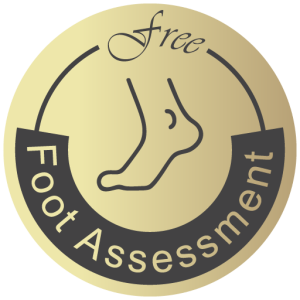



Plantar fasciitis is one of the most common causes of chronic heel pain, often making walking or standing for long periods a daily struggle. The condition occurs when the plantar fascia, a thick band of tissue that connects the heel bone to the toes, becomes inflamed or overstressed. Choosing the right plantar fasciitis shoes is essential to alleviate pain, promote healing, and prevent further damage. Podiatrists consistently emphasize that properly designed footwear can make a significant difference in managing this condition. In fact, around 10% of individuals with heel pain find that switching to dedicated plantar fasciitis shoes dramatically reduces discomfort and improves mobility.
This comprehensive guide explores what podiatrists recommend when selecting the best plantar fasciitis shoes, what features to look for, and how the right footwear supports foot mechanics. Whether you are an active walker or someone who spends long hours standing, understanding your shoe choice can make all the difference.
Plantar fasciitis develops due to repeated strain on the plantar fascia ligament. Factors such as overpronation, improper footwear, flat feet, and prolonged standing on hard surfaces can worsen the condition. Shoes that lack proper support or cushioning often increase tension in the heel and arch area, causing more inflammation and pain.
Podiatrists highlight that well-structured shoes distribute pressure evenly across the foot, reducing stress on the heel and arch. This is where plantar fasciitis shoes come into play. They are designed to provide enhanced arch support, firm heel counters, and cushioned midsoles that absorb shock during every step. Wearing supportive footwear daily is one of the simplest yet most effective ways to manage heel pain naturally.
If you are unsure how to assess your gait or foot alignment, consider getting a professional in-store foot assessment to understand your exact support needs. You can learn more about these evaluations through an in-store foot assessment service that helps identify the right footwear type for your foot structure.
Podiatrists agree that choosing the right shoes begins with understanding key design features that promote comfort and foot health. Below are the essential elements experts recommend when selecting heel pain shoes for plantar fasciitis relief.
A firm heel counter stabilizes the rearfoot, reducing unnecessary movement that aggravates the plantar fascia. This feature keeps your heel aligned and prevents excessive rolling inward, known as overpronation.
A deep heel cup cradles the heel and redistributes pressure evenly throughout the foot. This design helps control heel motion and provides the necessary stability during walking or running.
The best plantar fasciitis shoes provide structured arch support tailored to your foot type. Shoes with supportive arches reduce tension on the plantar fascia, allowing it to heal gradually. People with flat feet or high arches particularly benefit from this feature.
Cushioned midsoles and shock-absorbing materials like EVA foam or gel layers protect the heel from hard impacts. Since heel pain is often aggravated by repetitive pressure, adequate cushioning ensures comfort throughout the day.
Shoes should be flexible enough to allow natural foot motion but firm enough to prevent the arch from collapsing. Too much flexibility can strain the plantar fascia, while excessive stiffness may limit mobility.
Removable insoles allow you to insert custom insoles if prescribed by a podiatrist. This customization ensures the shoe adapts to your unique foot needs.
By understanding these structural details, you can identify the ideal footwear for reducing chronic heel discomfort. Explore a range of supportive shoe options that meet podiatric standards for comfort and stability.
Plantar fasciitis shoes are designed not only for comfort but also to aid in recovery. They address the root cause of heel pain by improving alignment and reducing strain on the plantar fascia ligament.
When walking or running, each step generates impact forces that travel through the heel. Specialized shoes absorb these forces, protecting the heel from repetitive stress and microtears in the fascia.
Proper footwear maintains optimal foot posture, reducing abnormal movements like overpronation or supination. This balance enhances stability and allows the foot muscles to function efficiently.
Adequate cushioning and ergonomic design promote circulation in the lower limbs, which is essential for healing inflamed tissues. Improved blood flow reduces stiffness and promotes flexibility.
Wearing plantar fasciitis shoes consistently prevents recurrence of pain by ensuring that pressure is evenly distributed across the foot. They also reduce fatigue, making daily activities more comfortable.
Incorporating best walking shoes for plantar fasciitis into your routine helps you stay active without worsening heel pain. Consistent use supports healing and prevents the condition from becoming chronic.
Not all shoes serve the same purpose. Podiatrists recommend choosing footwear based on your activity level and daily routine.
For general use, select lightweight and breathable shoes with firm heel counters and moderate arch support. A contoured insole and padded heel collar provide all-day comfort during walking or standing.
When it comes to active lifestyles, best walking shoes with superior cushioning and motion control technology are essential. They absorb impact during long walks and promote efficient gait mechanics.
Professionals who stand for long hours should choose shoes with shock-absorbing midsoles and durable outsoles. Slip-resistant designs also provide additional safety in various work environments.
Supportive slippers or house shoes prevent stress on the plantar fascia even when indoors. Avoid walking barefoot on hard surfaces, as it may worsen heel discomfort.
When selecting shoes for plantar fasciitis, the fit is equally important as the features. Shoes that are too tight or too loose can disrupt proper alignment and negate the benefits of good design.
Even the best shoes wear down over time. If you notice increased heel pain, flattening of the insole, or reduced cushioning, it may be time to replace your footwear. Podiatrists recommend evaluating your shoes every six to nine months, depending on usage frequency.
Key indicators include:
Regular replacement ensures continuous support and minimizes the risk of reinjury. Proper shoe maintenance also prolongs the lifespan of your footwear, allowing you to stay active comfortably.
For additional details about product policies and user care, review the footwear terms and conditions related to shoe selection and usage guidance.
Footwear plays a significant role in managing plantar fasciitis, but comprehensive care involves more than just shoes. Here are some podiatrist-approved practices to complement your footwear choice:
Combining these strategies with the right plantar fasciitis shoes provides long-term relief and enhances foot function.
Choosing the right plantar fasciitis shoes can make a significant difference in managing heel pain and improving overall comfort. Podiatrists emphasize supportive design features like firm heel counters, proper arch support, and cushioned soles as key to recovery. Whether you need everyday wear or the best walking shoes for active routines, prioritizing supportive footwear is essential for preventing pain recurrence.
By investing time in selecting the right shoes and incorporating good foot care practices, individuals can maintain mobility and comfort without constant discomfort. Supportive, well-structured footwear not only alleviates pain but also promotes long-term foot health.
1. What are the best shoes for plantar fasciitis?
The best shoes for plantar fasciitis provide excellent arch support, firm heel counters, cushioned midsoles, and stable soles. These features reduce heel strain and promote healing.
2. Can walking shoes help relieve heel pain?
Yes, the best walking shoes are designed with shock-absorbing soles and supportive insoles, which minimize impact on the heel and reduce discomfort during prolonged activity.
3. How long should I wear plantar fasciitis shoes each day?
It is recommended to wear supportive footwear throughout the day, especially during standing, walking, or exercising, to maintain consistent support and prevent flare-ups.
4. Do I need custom orthotics with plantar fasciitis shoes?
Not always. Many plantar fasciitis shoes come with adequate support. However, if your podiatrist recommends orthotics, choose shoes with removable insoles to accommodate them.
5. How often should I replace my plantar fasciitis shoes?
Replace your shoes every six to nine months or sooner if you notice worn-out soles, flattened cushioning, or renewed heel pain.

